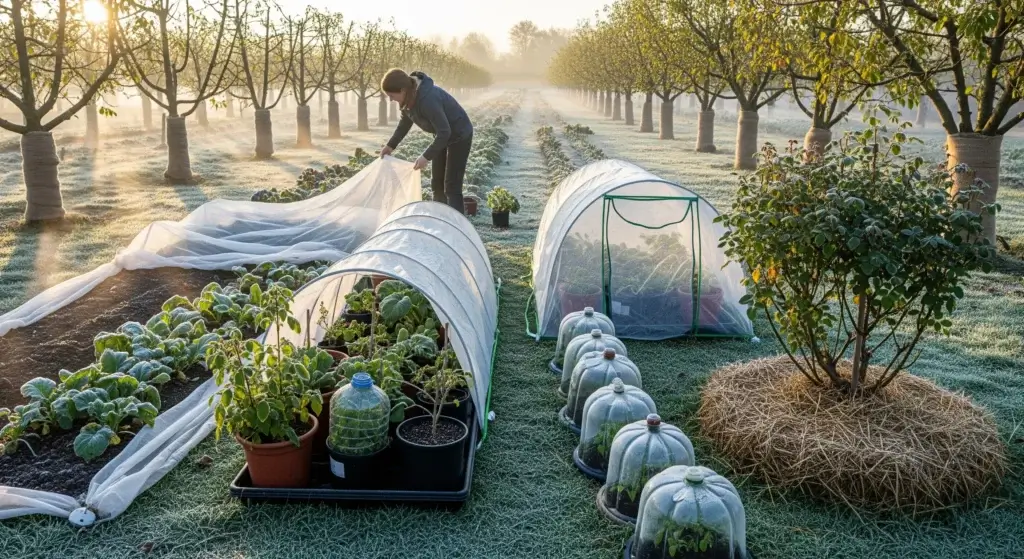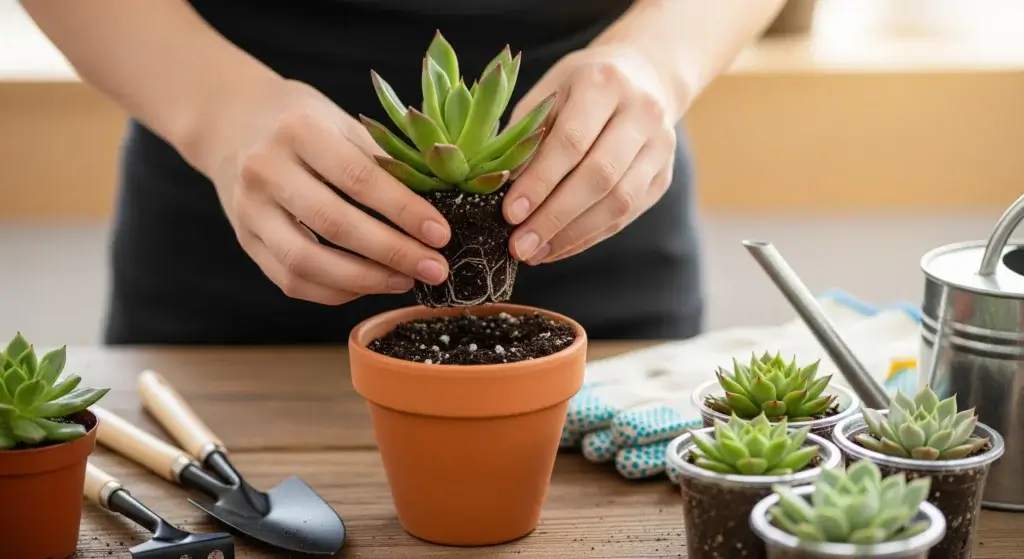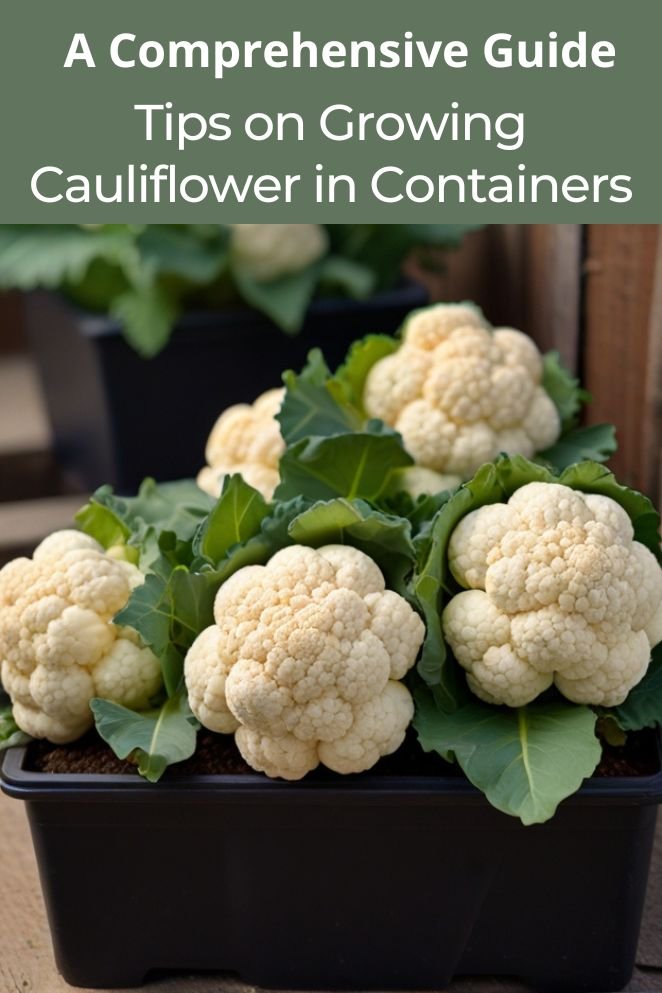
Are you itching to grow your own cauliflower but don’t have a spacious garden?
No worries!
With the right containers and a bit of know-how, you can cultivate this nutritious veggie right on your balcony or patio.
In this guide, we’ll walk you through everything you need to know to successfully grow cauliflower in containers.
Common Varieties of Cauliflower for Growing in Containers
Snowball
Snowball is a self-blanching variety.
This variety produces compact, round heads with a creamy-white color.
It’s known for its early maturity and can thrive in containers with proper care.
Veronica
This variety produces purple heads that are about 6 inches in diameter.
It matures in about 70 days and is a good choice for those who want to try a different color of cauliflower.
Graffiti
Another purple variety, Graffiti cauliflower, produces stunning violet heads with a sweet flavor.
It’s relatively compact and can be grown successfully in containers.
Cheddar
This unique variety produces heads with orange-yellow curds, providing a colorful twist to traditional cauliflower.
It’s compact and can be grown in containers with proper care.
Flame star
Flame Star cauliflower produces striking orange heads with a sweet flavor.
It’s a compact variety that can be grown in containers with full sun exposure.

Requirements for Growing Cauliflower in Containers
Growing cauliflower in containers is a great option for small spaces or if you want to give it a try before planting in the ground.
Here’s what you’ll need to consider:
Cauliflower seeds or seedlings
You can start your cauliflower garden with either seeds or seedlings from a nursery.
Seeds give you more variety options, while seedlings provide a head start.
Container
Pick a pot that’s at least 12 inches deep and 12-18 inches wide.
If you want to plant multiple cauliflower plants, opt for a wider pot (allowing 18-24 inches of space between each plant).
Opt for containers made of durable materials like plastic or terracotta with drainage holes at the bottom.
Potting soil
Use a well-draining, nutrient-rich potting mix.
Cauliflower prefers slightly acidic soil with a pH range of 6.0 to 7.0.
You can enhance the soil by adding compost or aged manure for additional nutrients.
Bleach solution (Optional)
You can use a bleach solution to sanitize your container before planting to prevent the spread of diseases.
How to Plant Cauliflower in Containers
Growing cauliflower in containers is a rewarding experience that doesn’t require a large outdoor space.
Here’s a step-by-step guide to get you started:
Step 1: Prepare the container
If you’re reusing a container, clean it thoroughly with the bleach solution and let it dry completely.
Ensure the container has drainage holes at the bottom to prevent waterlogging.
Step 2: Fill with soil
Fill the container with potting soil, leaving a few inches of space at the top for watering.
Step 3: Planting
If you’re starting from seeds, sow them according to the instructions on the seed packet.
If you’re using seedlings, transplant them into the container at the same depth they were in their original pots.
Space them according to the recommended distance for the variety you’re growing.
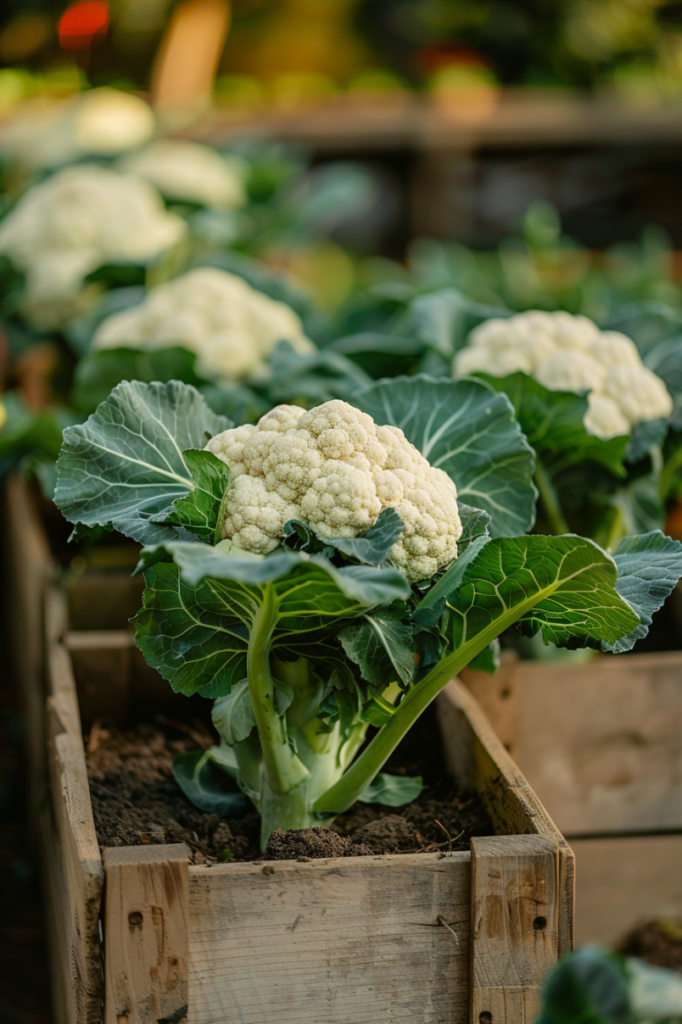
Cauliflower Plant Care
Taking care of your cauliflower plants is crucial for a successful harvest.
Here are some tips for maintaining healthy cauliflower in containers:
Watering
Consistency is key!
Aim for the soil to be slightly moist but not soggy.
Water deeply until the water runs out the drainage holes.
This ensures the entire root zone is reached.
Frequency will depend on factors like pot size, plant size, and weather conditions.
Hot, windy weather will dry the soil out faster.
Check the soil moisture daily, especially during hot weather, by sticking your finger an inch or two into the soil.
Fertilizing
Cauliflower is a heavy feeder.
To promote healthy growth and good head formation, provide nutrients throughout the growing season. You have two options:
- Use a balanced, water-soluble fertilizer and feed your plants once a month, following the package instructions for dilution.
- Alternatively, incorporate a slow-release fertilizer into the potting mix at planting time. This provides a steady stream of nutrients over time.
Sunlight and temperature
Cauliflower thrives in cool weather, ideally between 50-70°F (10-21°C).
Aim for at least 6 hours of direct sunlight daily. Too much heat can stress the plant and hinder head formation.
If you live in a hot climate, consider providing some afternoon shade for your container.
Blanching
Some varieties are self-blanching, where the leaves curl naturally over the developing head.
Watch the plants carefully when the heads are about 2 inches (5 cm) across.
If the leaves aren’t doing a good job at protecting the heads, help them along by pulling the large, outside leaves up around the head, then secure them with a piece of string or a clothespin.
Soil pH
Monitor the soil pH occasionally.
Cauliflower prefers a slightly acidic soil with a pH around 6.0-6.8.
You can adjust the pH with a store-bought soil acidifier if needed, following package instructions.
Maintenance
Monitor your plants for pests and diseases regularly.
Treat any issues promptly to prevent them from spreading. Remove any yellowing leaves and weeds to promote healthy growth.
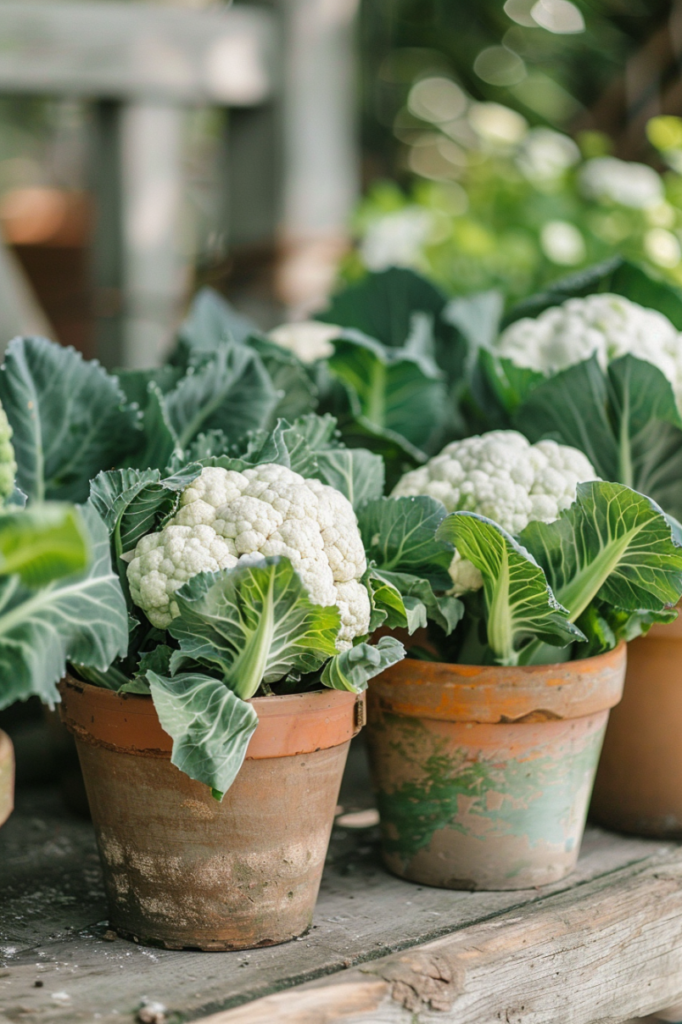
Conclusion
Growing cauliflower in containers offers a convenient and rewarding gardening experience, especially for those with limited outdoor space.
By following the outlined requirements and care tips, you can cultivate healthy cauliflower plants and enjoy a bountiful harvest.
With dedication and attention to detail, you can grow delicious cauliflower right on your patio or balcony.
FAQs
Yes, absolutely! Cauliflower can be successfully grown in pots on a balcony as long as they receive adequate sunlight and care.
Containers for growing cauliflower should be at least 12 inches deep to accommodate the plant’s root system.
Cauliflower is a cool-season crop, so it’s best to plant it in containers during the cooler months of spring or fall for optimal growth.

